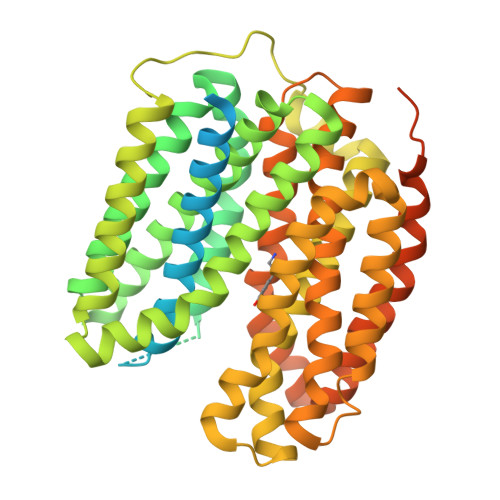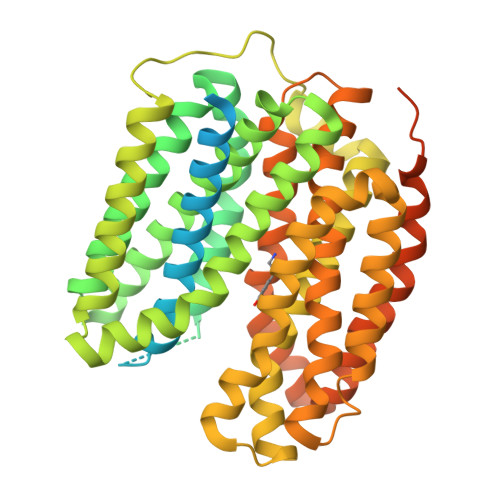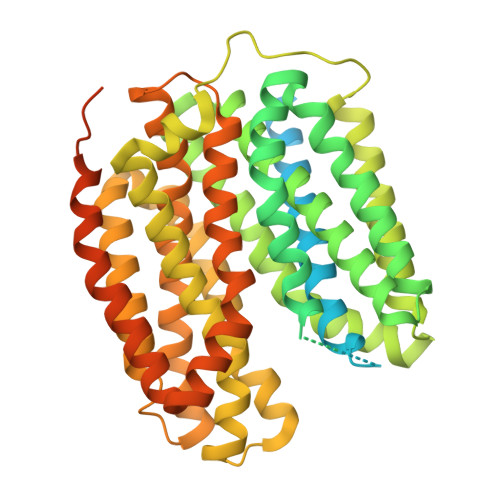Drug inhibition and substrate transport mechanisms of human VMAT2.
Wei, F., Liu, H., Zhang, W., Wang, J., Zhang, Y.(2025) Nat Commun 16: 323-323
- PubMed: 39747030
- DOI: https://doi.org/10.1038/s41467-024-55361-0
- Primary Citation of Related Structures:
8X3K, 9KQ8, 9KQA, 9KQE - PubMed Abstract:
Vesicular monoamine transporter 2 (VMAT2) is crucial for packaging monoamine neurotransmitters into synaptic vesicles, with their dysregulation linked to schizophrenia, mood disorders, and Parkinson's disease. Tetrabenazine (TBZ) and valbenazine (VBZ), both FDA-approved VMAT2 inhibitors, are employed to treat chorea and tardive dyskinesia (TD). Our study presents the structures of VMAT2 bound to substrates serotonin (5-HT) and dopamine (DA), as well as the inhibitors TBZ and VBZ. Utilizing cryo-electron microscopy (cryo-EM), mutagenesis functional assays, and molecular dynamics (MD) simulations, we elucidate the mechanisms of substrate transport and drug inhibition. Our MD simulations indicate potential binding poses of substrate (5-HT) in both cytosol-facing and lumen-facing states, emphasizing the significance of protonation of key acidic residues for substrate release. We demonstrate that TBZ locks VMAT2 in a lumen-facing occluded state, while VBZ stabilizes it in a lumen-facing conformation. These insights enhance our understanding of VMAT2 function and provide valuable insights for the development of novel therapeutic strategies for psychiatric disorders.
Organizational Affiliation:
Shanghai Fifth People's Hospital, Fudan University, and Shanghai Key Laboratory of Medical Epigenetics, International Co-laboratory of Medical Epigenetics and Metabolism (Ministry of Science and Technology), Institutes of Biomedical Sciences, Fudan University, Shanghai, China.

















